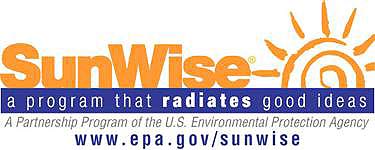Green Your Way Back to School
Thursday, August 6th, 2009As the end of summer approaches, I find myself not basking out in the sun, but preparing for the school year. While most of the nation’s children head back to school in September, in our neck of the woods school starts in August. With four school age kids in our household, the list of needed school items is quite extensive. This year I decided to get ahead of the game. With some careful planning, we are greening our way back to school.
As with previous years, the girls will be wearing hand-me-down uniforms. I usually buy one new uniform a year for one of my daughters and the rest are traded with a colleague whose daughter goes to the same school. A pair of shoes will be refurbished for one of the girls.
This year I decided to look first for the required school supplies at home instead of hitting the mall. So far, my eldest daughter’s backpack will be reused and our youngest daughter will use her older sister’s rolling backpack from the year before last. One quick cleaning was all it took to make it look brand new. Pens, pencils, rulers, staplers and binders, among others are being reused from last year. I was surprised to learn that six billion pens are thrown away every year!
Since books are another big ticket item in the “back to school” budget, I buy them from online retailers that specialize in used books. Only updated editions of specific books and workbooks are being bought new.
Furthermore, I have decided that all new items we purchase this season will be made from recycled or sustainable sources.
Here are some brief pointers to make your back to school a green one:
- Take inventory before going to the stores–this will save you time and money and it will be good to our Earth.
- Buy quality materials when available, (i.e. backpacks, shoes, etc.) to ensure durability.
- Refillable pens and pencils are a small change with a large impact. Fourteen billion pencils are manufactured every year, some from ancient trees.
- Reuse everything that remains in good condition. Limit disposable supplies.
- Make your kids a greener, waste-free lunch.
- Use recycled paper to protect our trees and cut down on waste.
About the author: Brenda Reyes Tomassini joined EPA in 2002. She is a public affairs specialist in the San Juan, Puerto Rico office and also handles community relations for the Caribbean Environmental Protection Division.

 As the Beach Program Coordinator for EPA’s office in Chicago, I’m often asked whether it’s safe to swim in Lake Michigan. My answer is yes, it is safe to swim in the lake, but there are things that swimmers need to know before they go to the beach to help keep themselves - and others - from getting sick at the beach.
As the Beach Program Coordinator for EPA’s office in Chicago, I’m often asked whether it’s safe to swim in Lake Michigan. My answer is yes, it is safe to swim in the lake, but there are things that swimmers need to know before they go to the beach to help keep themselves - and others - from getting sick at the beach. What do you do when you see a sign at the beach that advises against swimming? Swimming in contaminated water can make you sick, ranging from sore throats and diarrhea to more serious illnesses. EPA and CDC are currently studying the relationship between water quality and illness, and the results of the study, due out in 2011, will help better protect swimmers.
What do you do when you see a sign at the beach that advises against swimming? Swimming in contaminated water can make you sick, ranging from sore throats and diarrhea to more serious illnesses. EPA and CDC are currently studying the relationship between water quality and illness, and the results of the study, due out in 2011, will help better protect swimmers.

 With summer in full swing, it’s the perfect chance to be outside as much as possible. But you should be mindful of a few things before complete summer abandon takes over your life. When you’re spending so much time outside, it’s important to protect your skin against the harmful rays of the sun. You don’t want to grow up with lots of wrinkles or skin cancer because you keep getting tanned or sunburned! Here are a few great steps from the EPA’s
With summer in full swing, it’s the perfect chance to be outside as much as possible. But you should be mindful of a few things before complete summer abandon takes over your life. When you’re spending so much time outside, it’s important to protect your skin against the harmful rays of the sun. You don’t want to grow up with lots of wrinkles or skin cancer because you keep getting tanned or sunburned! Here are a few great steps from the EPA’s